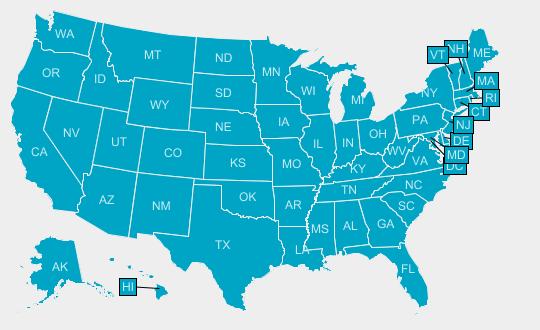Here is a list I found online from gynpages.com that gives the names of late term abortion providers by state. Their limit in weeks LMP is given in parenthesis.
Arizona
Phoenix – Family Planning Associates Medical Group (up to 23 weeks LMP)
Arkansas
Little Rock – Little Rock Family Planning Services (21.3 weeks LMP)
California
Beverly Hills – Josepha Seletz, MD / Pro-Choice Medical (24 weeks LMP)
Concord – Choice Medical Group (24 weeks LMP)
Fremont – Choice Medical Group (24 weeks LMP)
Oakland – Family Planning Specialists Medical Group (22 weeks LMP)
Sacramento – Choice Medical Group (24 weeks LMP)
Sacramento – Pregnancy Consultation Center & Medical Group (24 weeks LMP)
San Francisco – Choice Medical Group (24 weeks LMP)
San Jose – Choice Medical Group (24 weeks LMP)
Southern California – Family Planning Associates Medical Group 17 Locations – (up to 21.5 weeks LMP)
Colorado
Boulder – Boulder Abortion Clinic (26+ weeks LMP)
Connecticut
Bridgeport – Summit Women’s Center (up to 17 weeks LMP)
Hartford – Summit Medical Center (up to 17 weeks LMP)
Florida
Orlando – Orlando Women’s Center (24+ weeks LMP)
West Palm Beach – Presidential Women’s Center (22 weeks LMP)
Georgia
Atlanta – Atlanta SurgiCenter (26 weeks LMP)
Atlanta – Feminist Women’s Health Center (25 weeks LMP)
Atlanta – Summit Medical Associates (25 weeks LMP)
Illinois
Granite City – Hope Clinic for Women (24 weeks LMP)
Massachusetts
Boston / Chestnut Hill – Women’s Health Services (23 weeks LMP)
Michigan
Detroit – Northland Family Planning (24 weeks LMP)
Detroit – Summit Medical Associates (24 weeks LMP)
Detroit – Women’s Center Michigan (24 weeks LMP)
Minnesota
Minneapolis – Mildred S. Hanson MD (20 weeks LMP)
Nevada
Las Vegas – Summit Family Planning (24 weeks LMP)
New Jersey
Englewood – Metropolitan Medical Associates (24 weeks LMP)
Union/Union City – Jersey GYN Associates (up to 22 weeks LMP)
New York
New York City / Queens – Liberty Women’s Health Care of Queens (24 weeks LMP)
Ohio
Cleveland – Preterm (22 weeks LMP)
Texas
Dallas – Abortion Advantage (up to 24 weeks LMP)
San Antonio – Whole Woman’s Surgical Center (25 weeks LMP)
Wisconsin
Milwaukee – Affiliated Medical Services (22 weeks LMP)
ANSIRH (Advancing New Standards in Reproductive Health) at UCSF has created a new web resource on late abortion <http://www.ansirh.org/research/late-abortion.php> . Incorporated into their website, referral information; resources for women, clinicians, and journalists; facts on later abortion; and information on legal issues, women’s experiences with abortion, and ANSIRH’s Second Trimester Abortion Initiative. Please take a look.















